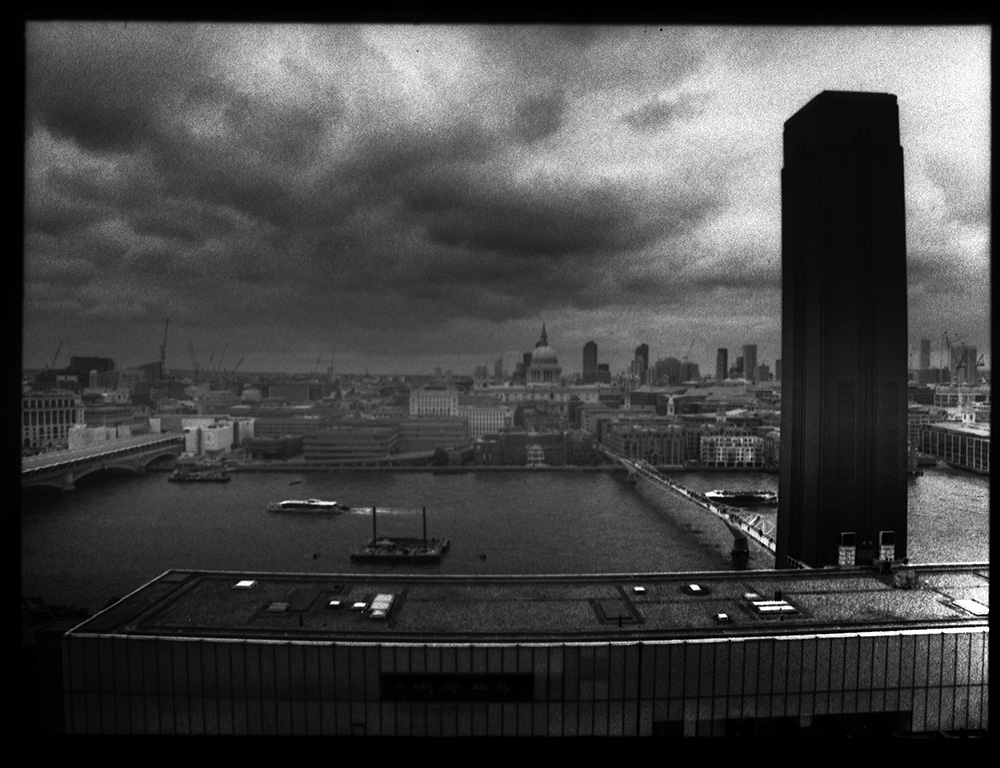The Olympus Pen F half-frame SLR had a small range of lenses. I've written about the 25mm f/2.8, the 40mm f/1.4, and the standard 38mm f/1.8 before. The system majored in normal primes and telephoto zooms, with a big gap at the wide end. The widest Pen F lens was a 20mm f/3.5, but with the 1.4x crop factor of half-frame it was only really a 28mm. And there were no fast telephotos, no fisheye, and no tilt-shift, no mirror lenses etc.
Fortunately Olympus sold a range of adapters that could fit other lenses onto the Pen F lens mount. Judging by eBay's listings the most popular was M42, but there were also T-Mount, Canon FD, Nikon F and Minolta models, even one for Olympus OM lenses. The adapters had some limitations - there was no aperture automation, so you had to use stop-down metering, and the intriguing M39 Leica screw mount adapter was macro only. Nonetheless it was nice to have the option. In a way the Pen F was a distant ancestor of modern mirrorless cameras, in that it was unusually compatible with other lens systems.
Phototec 100
The Nikon F adapter is particularly interesting because the Nikon F mount is still used today, and until relatively recently Nikon lenses had mechanical aperture rings. G-type Nikon lenses will mount on a Pen F adapter but the aperture will be perpetually stopped down to f/22 or something equally silly (unless you use blu-tak to hold the aperture pin open).
The lens looks massive; in reality the Pen F is small.
The adapter isn't particularly bulky.
Luckily I have some manual-everything Nikon lenses. For this post I used a Samyang 14mm f/2.8, which becomes a 20mm on a half-frame SLR. Optically it has a lot of barrel distortion and it's difficult to focus on an original Pen F because the camera doesn't have a split-image viewfinder, and with a wide angle lens everything looks far away.
On a physical level it looks silly, and on a practical level the great bulk defeats one of the Pen F system's raisons d'être; it was supposed to be compact. On the other hand if you want to go wider than 28mm with a Pen F (or faster than f/4 at the longer end) there aren't many other options, and the Samyang 14mm is not unusually large for a 14mm full-frame lens.
Also, off to the Tate Modern, which has grown since I was last there. The last exhibit, Abraham Cruzvillegas's Empty Lot, was a load of cobblers. It has now been replaced by a choir and a twisty building which has grown from one of the Tate's corners. If the intention was to pay homage to 1960s public architecture, they succeeded. There is a viewing platform on the top, a restaurant just beneath that, and exhibition spaces all the way down.
The top of the Tate affords a view into the living rooms of all the posh flats that surround the gallery. The living rooms looked unlived-in; when I was there they were empty and extraordinarily clean, with magazines and furniture dotted around as if they were show homes. I wondered how many of the flats were simply investment vehicles. The area around the Tate Modern is empty of all the things that support human life.
The exhibits included some people handing out ribbons, plus some thin intense-looking Europeans making music with air pumps, and if you think about it aren't we the exhibits in some strange way? As we peer at the art, security cameras peer at us; in a control room somewhere there are banks of monitors overseen by operators who ponder our meaning. At least it's nice to imagine that someone is pondering our meaning. The alternative - that no-one is observing us - is too horrible to contemplate.
EDIT: Four years later I repeated the experiment with a Vivitar 70-210mm f/3.5 Series 1, which became a kind of 100-300mm.
























